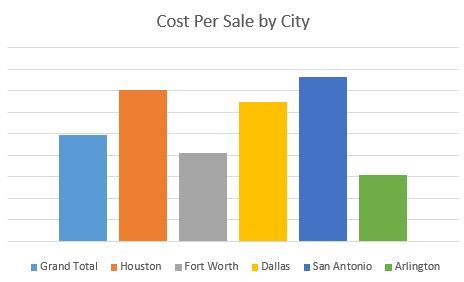Why local matters, even for national advertisers
There’s been a lot of talk recently about personalization as Google, Facebook, and others continue to roll out new targeting features.
These features like Customer Match and Custom Audiences allow advertisers to target consumers based on previous data captured. These targeting capabilities have been incredible at driving improved return on investment.
I think these features are not only better for advertisers, but also consumers. However, what I continue to find interesting in these campaigns is the lack of focus on localization.
Location
The power of location is incredibly valuable, especially with the growth of mobile.
According to eMarketer, 93% of retail sales still happen in-store. Google data shows that 66% of people want ads customized to their location.
Now I understand why localization is often over looked. It’s harder to manage ads at local levels. Things are just easier to manage at scale, one bid, one keyword, one ad. Localizing things still requires a tremendous amount of effort, but effort that is well worth it, even for those brands that are truly national or ecommerce only.
I took a look at national conversion data and the top five volume states. What you can see is Texas has the highest Cost Per Sale than any of the other top five states, but has the second highest conversion rate. So how could this be?
This is a combination of multiple potential factors that include competition, bid strategy, product availability, and many more.
If you are looking at the campaign at a national level you’d miss this data. If you went a step deeper you might say Texas is not worth the investment if you could get more volume from the better performing states.


However, breaking down even the performance in Texas you find some great areas of opportunity.
Several of the largest volume cities are below the total average. So as with most things you can’t just throw the baby out with the bath water. However, because it is difficult to scale this type of analysis brands simply elect for the easier path and manage at a national level.

So if we know that consumers want localized content/ads and performance varies significantly by state and city what is the best way to take advantage of this knowledge?
Here are four ideas to consider:
Duplicate and break out high volume areas
You don’t need to break out every single city, but identifying key markets where the volume will significantly impact total results can make a big difference. This means both high and low performers. Just because you sell nationally doesn’t mean you need to advertise and pay for traffic nationally.
ABT – Always Be Testing
Take a run at some key markets with different ad copy and landing page experiences. What are the ways that showing localization to your customers can drive impact? Is it mentioning their local city in the copy? Is it using local images on the landing page?
Experience your brand as a customer
This suggestion has shown up a few times in articles I’ve written, but it just make sense. I find too often brands create the strategy, but never experience the execution of that strategy. Do a search for your brand as a customer locally might. Does your brand appear the way you want it to? Are the competitors and their offers what you expected them to be? Usually brands are surprised by how different the real world is vs.
Pressure test the metrics you are using
This is a big one for local. So many brands view success of online marketing as online sales. However, it just isn’t that simple. Many consumers want to transact in person and an online sale just doesn’t that into account. Now the industry hasn’t figured this out yet, but it is no different for TV and other offline channels and billions of dollars still go to those channels. Why? Because they work and people know it in their gut or from their own experiences as consumers.
If you can’t tie specific offline sales data to online behavior there are two things I recommend;
- Value non-conversion events like “Find a Store,” “Contact Us,” “Phone Calls.” Just use some math to determine these values.
- Create a waterfall flow of consumer behavior to determine ROI. Go from impressions, clicks, store visits, in store conversion rate, average order size to get estimated revenue. There are third party studies by Google and others to help create valid assumptions. Here’s an example – https://think.storage.googleapis.com/docs/how-advertisers-can-extend-their-relevance-with-search_research-studies.pdf
Overall location maters in all that we do in our lives and this fact will never change. Heck I live in Cleveland and when I cross the city to the east side I feel like I’m in a different country. I’m sure you as a consumer feel the same way. So why would your advertising be any different?
source https://searchenginewatch.com/2016/11/11/why-local-matters-even-for-national-advertisers/